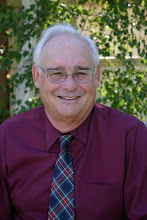California’s high speed rail system will either be an amazing success, or an amazing failure. Dueling ridership predictions revealed this month paint both pictures. In early February, some transportation analysts predicted relatively few people will ride the high speed train, making the system a money loser. But later in the month, Bay Area handwringers, armed with another consultant’s study, predicted high speed rail would be so popular it would pull 6 million passengers a year away from their local airports.
The bottom line: No one knows for sure how many people will ride the high speed rail system if California can get it built. It all depends. On what? On such factors as the cost of a ticket, on where people want to go, on alternative transportation. We are talking 20 or 30 years into the future. You can guess. But no one knows for sure.
And that’s what transportation modeling is all about. That’s why communities can have plans for projects, such as subdivisions, and studies that predict their impacts, such as traffic studies. But when the project is built and occupied, the impacts may be better or worse than predicted.
Modeling is just a structured way of guessing how people might behave under specified conditions. Factors and assumptions are placed in these models by fallible human beings, who may be influenced by their preferences. Since most of us are not experts in modeling, we usually look at the predicted results through our own lenses and decide if they make sense. That often depends on what we would like to believe. We might even look deeper into the assumptions knowing that those who are making the models control the outcome.
To have credibility, those making the models that predict ridership on a future California high speed rail system must clearly lay out for a skeptical public the assumptions and methods they are using.
Why does this matter? Because the $10 billion voters approved in 2008 to help build the system and the $2.6 billion in federal stimulus money that now has been provided by the Obama administration is just a fraction of what it will cost to build the $42 billion-plus San Francisco to Los Angeles route. Taxpayers and private investors still must be convinced to keep investing in the system. That’s going to require a whole lot of credibility and honesty from the California High Speed Rail Authority.
Written by John Hardisty, Bakersfield http://www.svs2help.com/
Subscribe to:
Post Comments (Atom)


No comments:
Post a Comment